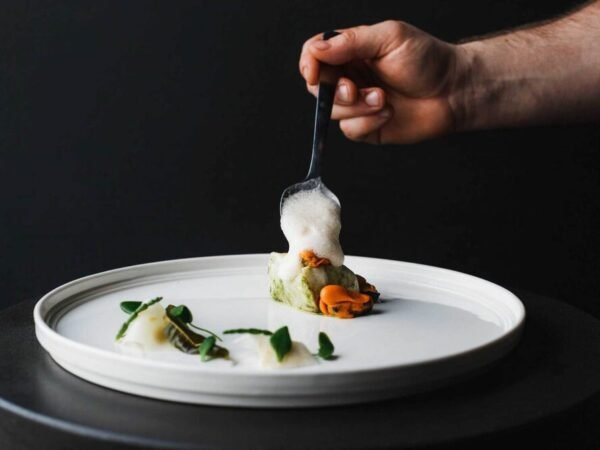Italy is renowned for its cuisine, and although pasta and pizza take center stage, the biscuit (or cookie) tradition in Italy is equally rich and diverse. With a history dating back centuries, these sweet delights have every region of Italy adding its specialties and tastes. Companies introduce these regional specialties into modern homes, allowing people everywhere to enjoy a slice of Italian tradition with their coffee.
The Regional Tapestry of Italian Baking
Italy’s geography and history have given rise to a remarkable diversity of baking traditions. The North, which France and Austria have influenced, tends to use butter and nut flavors. The South, due to the Mediterranean climate and Arabic influence, leans towards citrus fruits, honey, and almond sweets.
Every area has its signature biscuits: Tuscany: Famous for Santucci (or biscotti), cookies studded with almonds and traditionally dipped in sweet wine. Sicily: Offers cuccidati, fig-filled biscuits that blend Arab and local influences. Piedmont: Renowned for hazelnut sweets such as baci di dama. Lazio: Offers Rossetti, a type of biscotti with hazelnuts instead of almonds. Apulia: Hometown of taralli dolci, ring-shaped cookies that are covered in sugar or lemon icing. Veneto: Famous for bacilli, crunchy biscuits once transported by sailors because they have a long shelf life.
These are more than just snacks; they often play a part in celebrations, holidays, and family gatherings. Weddings, christenings, and Christmas parties are replete with platters of heritage biscuits passed down through the years.
Modern Tradition in a Box
Although the majority of the traditional biscuits are still produced by hand in households and bakeries, companies have been able to introduce regional specialties to broader consumer groups. Founded on a reputation for using simple, natural ingredients, Mulino Bianco develops a variety of products rooted in Italy’s gastronomic heritage.
Common forms include: Machine: Rich, moist, buttery biscuits perfect for milk dipping Abbracci: Half-rings of chocolate and vanilla with two flavors combined. Galletti: Lightly sweet and crunchy with a touch of milk Baiocchi: Sandwich biscuits filled with hazelnut and chocolate cream Tarallucci: Classic, gold-colored biscuits ideal for breakfast
These packaged treats combine tradition and convenience, ideal for anyone who wants to bring an authentic taste of Italy into their daily lives.
How to Match Biscuits Like an Italian
Biscuits rarely make it by themselves in Italy. Here are a few pairing tips to level up your biscuit game: With Coffee: A morning espresso and some machine or baiocchi (hazelnut and chocolate cream-filled cookies) With Wine: Dip Santucci in vin santo, a sweet Tuscan dessert wine With Cheese: Experiment with simple almond biscuits paired with aged pecorino for contrast With Gelato: Use crumbled biscuits as a topping for a rich gelato With Tea: Have Galletti or tarallucci with herbal teas or chamomile in the evening
Pairing is not only about flavor – it’s about the experience. Italians know the importance of slowing down and savoring their food intentionally. Even a coffee break done in a hurry turns into a ritual when paired with the proper biscuit.
Homemade or Packaged: Which to Choose
While homemade biscuits have a natural appeal, packaged biscuits offer consistency, a longer shelf life, and greater convenience. Mulino Bianco achieves a balance between the two by using high-quality ingredients and adhering to traditional recipes.
If you’re short on time or just starting to try out Italian baked goods, beginning with reliable packaged ones can be an excellent introduction. They’re also a fantastic means to try out flavors before trying homemade ones.
For baking enthusiasts, there are numerous recipes to try in traditional Italian cookbooks. Give cantucci, brutti ma buoni (the “ugly but good” hazelnut cookies), or savoiardi (ladyfingers) for tiramisu a go. Homemade is where you can get creative – introduce orange zest, chocolate chips, or dried fruit for your personal touch.
Biscuit Moments in Everyday Life
In Italian families, biscuits are not confined to dessert or breakfast. They’re woven into daily rituals: A lunchtime coffee break with a few abbracci A milk or juice snack for schoolchildren Dessert after dinner when you have guests Biscuits are also well-liked hostess gifts.
And beyond Italy, the traditions are taking hold. Even more people in the UK and across Europe are discovering the joy of making simple, high-quality biscuits a part of daily life.
Final Thoughts
Italian biscuits are more than snacks – they are small windows on a rich culinary history. Whether you’re consuming a purchased abbraccio or making your Santucci, every bite links you to a tale, a location, and a lifestyle.
Brands strive to bridge the distance between contemporary life and tradition so that all can enjoy these timeless pleasures. It speaks to how food rooted in simplicity and authenticity is still capable of resonating in a time of haste.
So the next time you take a biscuit, turn it into a mini ceremony. Make yourself a coffee, stand still for a second, and let the taste transport you into a balmy Italian kitchen. In one bite, you might find that some of the greatest stories are shared through food.
Do Read: MomFood ImportantCool – Redefining Modern Family Nutrition with Style













